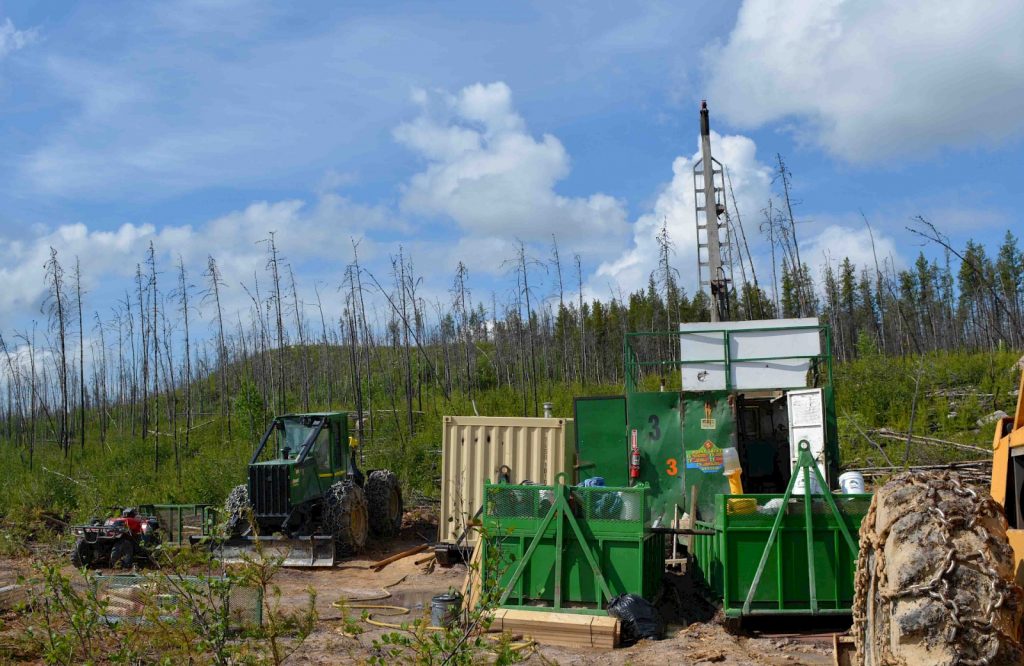Fission 3.0 gears up for winter uranium drilling

Fission 3.0 Corp. [FUU-TSXV] said Monday it has begun mobilizing for winter drilling at its 100%-owned Patterson Lake North (PLN) project in Saskatchewan.
The company said a 20-hole program of stepout drilling is planned to expand the highly successful drill results from November, 2022, where assays confirmed the shallow depth, wide and continuous mineralization in basement rock with 15 metres at 6.97% U308, including a high-grade 5.5-metre interval averaging 18.6% U308.
The drill holes are designed to test for continuation of mineralization along strike, and up and down dip, where four holes drilled in the fall of 2022 outlined a very significant zone of high-grade uranium, which remains open in all directions.
The plan will include additional holes on section lines 00N and 15S to establish the extent of mineralization that has already been intersected in those two lines before stepping out along strike. Holes will also test up-dip for unconformity and sandstone hosted mineralization.
The announcement comes after Fission 3.0 recently raised $8 million from a non brokered private placement financing.
On December 30, 2022, Fission 3.0 Corp shares closed at 32 cents. The shares are currently trading in a 52-week range of 33.5 cents and $0.065.
Fission 3.0 is focused on finding the next high-grade deposit in Saskatchewan’s Athabasca Basin, the world’s richest uranium region, an area that in 2020 accounted for approximately 8.1% of the global primary uranium production.
Headed by CEO Dev Randhawa, the award-winning Fission 3.0 technical team already has a number of high-profile Athabasca uranium discoveries under its belt
Fission 3.0 has 16 properties in its portfolio. The company aims to find unconformity-related deposits, the most common of the 14 major categories of uranium deposit types. Notable examples include Key Lake, Cluff Lake, Rabbit Lake, McClean Lake, McArthur River and Cigar Lake deposits – with some of the ore around 20% uranium.
An unconformity is a buried erosional or non-depositional surface, separating two rock masses or strata of different ages, indicating that sediment deposition was not continuous. Basement-hosted deposits are spatially associated with and closely related to, unconformity uranium-occurrences.
This year, the company said it expected to spend $12.8 million in Saskatchewan and will still have $5 million in the treasury when that work is done.
Fission 3.0 said it will drill 20 holes at Patterson Lake North (PLN), one of the most advanced and highest ranked projects in Fission 3.0’s portfolio by virtue of its location and the fact that it has multiple untested and prospective targets for high grade uranium.
Previous drilling by Fission 3.0 at the more than 3.0-kilometre-long A1 conductor intersected basement hosted uranium mineralization supported by the presence of alteration, pathfinder elements and structural disturbance reinforcing the large-scale potential of the project, the company has said.
Exploration at PLN this year will include drilling at the A1 Conductor.
